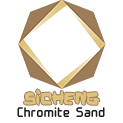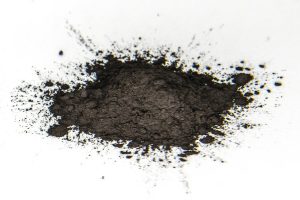chromite powder, chrome flour 325, and chromite flour, it is an inorganic compound used as a pigment
Its chemical composition is Cr2O3. Chromite is the sole naturally occurring ore of chromium, occurs with iron oxide, and It has a melting point of 2,040 °C.
It is referred to as being “almost chemically inert”(1), lending itself to a variety of applications where long term stability is required. Abundant in South Africa, chromite ore is considered to be more usable than silica sand owing to the former producing less fines and therefore requiring less new sands to be added to a casting system overall(2). Because of the size and quantity of the escaping fines, chrome sand is viewed as superior to silica sand in terms of less potential respiratory damage in the foundry.
| PHYSICAL PROPERTIES(TYPICAL) | AVERAGE CHEMICAL COMPOSITION(TYPICAL) | ||
| PH | 7-9 | Cr2O3 | ≥46.0% |
| Color | Black | SiO2 | ≤1.0% |
| Acid Amount | ≤2m | Fe2O3 | ≤26.5% |
| Soil% | ≤0.1 | CaO | ≤0.30% |
| Bulk Density | 2.5-3.0g/cm3 | MgO | ≤10.0% |
| Specific Gravity | 4.0-4.8g/cm3 | Al2O3 | ≤15.5% |
| Moisture | ≤0.1% | P | ≤0.003% |
| Sintered temperature | ≥1800℃ | S | ≤0.003% |
| Free Acid | 0 | Cr/Fe | 1.55:1 |
| Filling density | 2.6g/cm3 | ||
| Melting temperature | ≥2180℃ | ||
Properties?
Chromite flour is used because it is:
– Stable at high temperatures
– Thermal-shock resistant
– Resistant to corrosive glasses and slags
– High heat resistance
Application:
—glass pigment
—Refractory Bricks and Refractory Cement
–Stainless Steel Production

